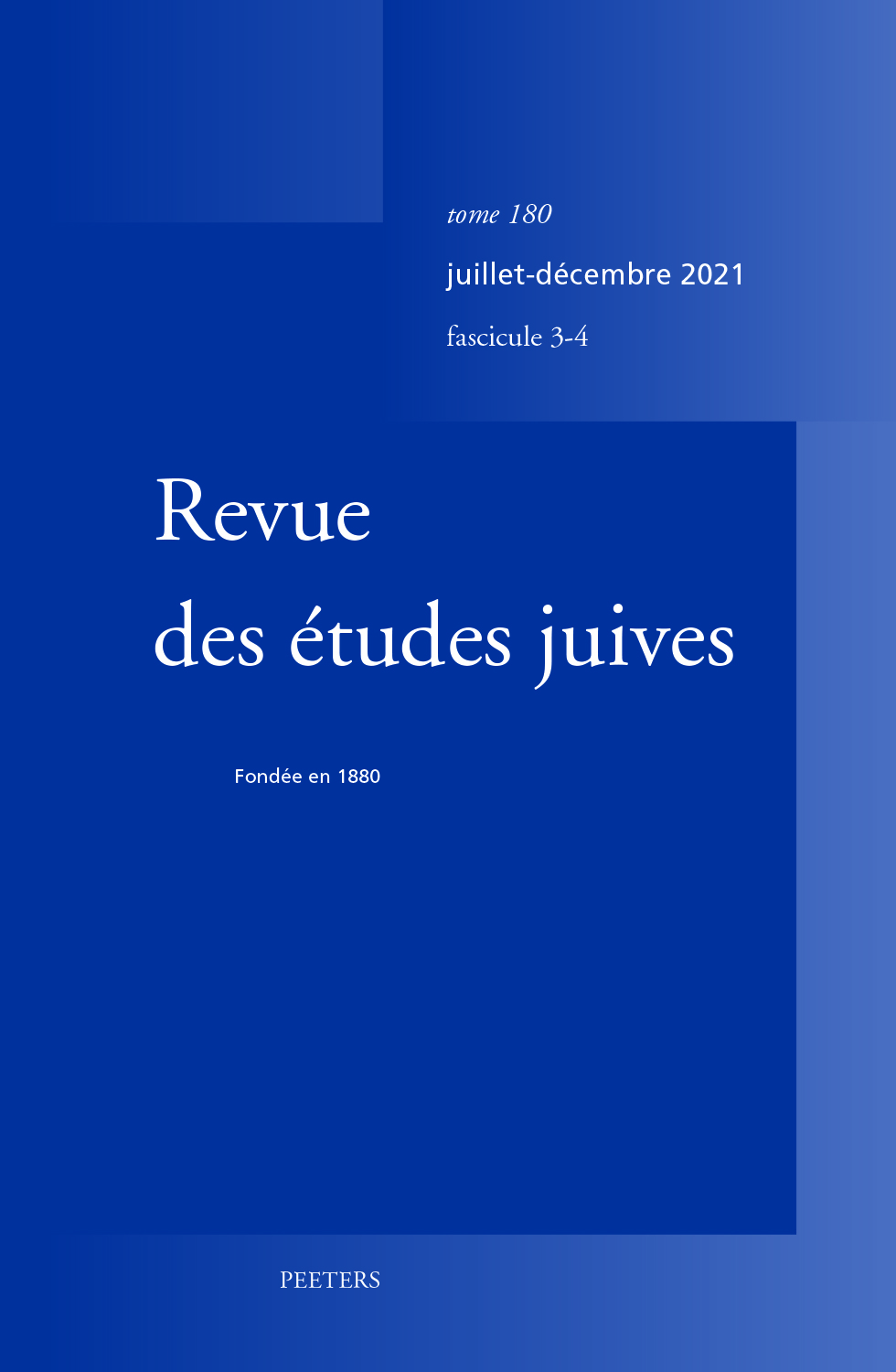 previous article in this issue previous article in this issue | next article in this issue  |

Preview first page |
Document Details : Title: The Hebrew Gospel of Matthew in Shem Tob's Eben Boḥan Subtitle: Particular Features and Medieval Sources Author(s): NICLÓS ALBARRACÍN, José-Vicente Journal: Revue des Études Juives Volume: 181 Issue: 1-2 Date: janvier-juin 2022 Pages: 137-157 DOI: 10.2143/REJ.181.1.3290626 Abstract : The first part of this paper focuses on the main medieval features of the Gospel of Saint Matthew present in the Eben Boḥan ('The Touchstone') of Shem Tob ibn Shaprut as the presence of a vernacular Romance vocabulary compared with its equivalents in Occitan, Provençal and Catalan New Testaments from the period and the insertion of some scholarly paragraphs of the Glossa Ordinaria with special mention of Mt 13,23. The second part offers new arguments about the recension of the Vulgate used in the Roman and Hebrew Translation as coming from Benedictine Monasteries from northern Catalonia such as Ripoll or San Pere de Rodes and some similar marks of liturgical readings in a Liber Commicus discovered in the past century in Narbonne. Two appendices give notice of the history of the Glossa Ordinaria to Mt 13,23 in patristic literature and a list of Romance words in Catalan or Aragonese languages. La première partie de cet article se concentre sur les principales caractéristiques médiévales de l’Évangile de saint Matthieu, intégré dans le Eben boḥan («La Pierre de touche») de Shem Tob ibn Shaprut. Le vocabulaire roman vernaculaire présent dans cet Evangile est comparé à ses équivalents en occitan, provençal et catalan des Nouveaux Testaments de l’époque. On étudie ensuite l’insertion dans le texte canonique de quelques éléments de culture scolastique provenant de la Glossa ordinaria avec une référence spéciale à Mt 13,23. La deuxième partie propose des arguments nouveaux regardant la recension de la Vulgate qui a servi de base à la traduction: elle proviendrait des monastères bénédictins du nord de la Catalogne tels Ripoll ou San Pere de Rodes. Elle tient également compte des matériaux liturgiques préservés dans un Liber Commicus découvert au siècle dernier à Narbonne. Deux annexes donnent un aperçu de l’histoire de la Glossa ordinaria sur Mt 13,23 dans la littérature patristique et une liste des mots romans en langues catalane ou aragonaise. |
|


